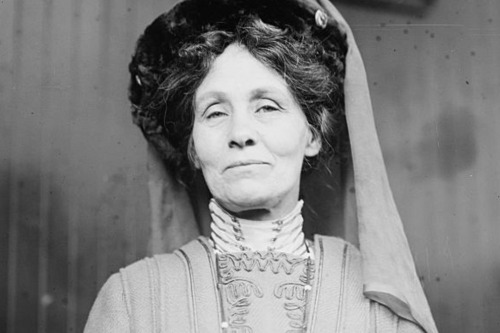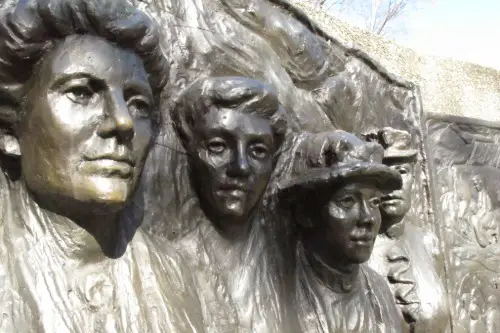It’s a well-known fact that women around the world fought hard for the right to vote. But what’s often forgotten is the secret, behind-the-scenes networks of suffragists who worked tirelessly in the shadows to make that dream a reality. These women didn’t just march in parades or hand out pamphlets—they built intricate webs of support, smuggled crucial information, and created underground movements that would eventually change the course of history. In the face of adversity, they harnessed the power of solidarity, and in doing so, shaped the political future for generations to come.
The Early Underground Movement: A Web of Allies

In the early years of the suffrage movement, women often found themselves fighting not only against male-dominated political systems but also against the societal expectations of their time. The idea of women’s political involvement was radical, and many women who joined the cause did so secretly—sowing the seeds of a network that would grow far beyond what anyone could imagine.
Take the story of Emmeline Pankhurst and her group of suffragists in England. Known for her leadership in the Women’s Social and Political Union (WSPU), Pankhurst used a combination of legal and illegal tactics to advance women’s rights. But behind every public protest, behind every carefully timed march, there was an invisible army of women working quietly in the shadows, making sure that messages were delivered, funds were raised, and strategies were in place.
Many of these women, like Annie Kenney, were vital to the movement’s success. Annie, who became one of the most prominent working-class suffragists, was one of Pankhurst’s most trusted allies. Kenney would often go underground, traveling by secret routes to avoid being arrested, and using coded language to communicate with other suffragists across the country. These women weren’t just fighting for votes; they were waging a quiet, determined war that unfolded through quiet meetings and whisper campaigns, out of the public eye.
Similarly, in the United States, suffragists like Elizabeth Cady Stanton and Susan B. Anthony faced fierce resistance to their cause, especially in the late 19th century. In the early days, they knew that they had to work with other activists in different causes—abolitionists, labor unions, and other women’s groups—in order to gain traction. As a result, they built secret alliances that were sometimes more influential than the public demonstrations. These underground alliances allowed suffragists to lobby politicians, create awareness, and mobilize voters, all while hiding in plain sight.
It’s easy to picture the suffrage movement as a series of bold speeches and marches, but much of the action took place in hidden rooms and quiet conversations. These networks may not have received the same recognition as the famous speeches, but they were undeniably the glue that held the movement together.
Women’s Networks Across Borders: A Global Sisterhood

While suffragists fought for their rights in their respective countries, there was an undeniable international solidarity among them. The suffrage movement wasn’t confined to a single nation; it spread across borders, connecting women in a global sisterhood. These secret networks allowed women to share strategies, exchange ideas, and most importantly, support one another through shared struggles.
In New Zealand, for instance, suffragists like Kate Sheppard helped lead the country to become the first self-governing nation to grant women the right to vote in 1893. Sheppard’s campaign was incredibly strategic, involving not only the public demonstrations but also quiet negotiations with politicians behind closed doors. She worked alongside a clandestine network of women who gathered in each other’s homes to write petitions, organize meetings, and ensure the cause was taken seriously.
Across the Atlantic, in the United States, suffragists were inspired by the victories of women in New Zealand. They formed their own clandestine networks to strategize around their own goals. One of the most crucial networks was The National Woman Suffrage Association, which provided a safe space for women to meet, organize, and discuss ways to secure their right to vote. Many of the women in these networks were well aware of the risks they faced—they knew that without careful planning, they could end up in jail, but they also knew that they had no other choice but to keep pushing forward.
What made these networks so remarkable was not just their shared sense of purpose, but the ways in which they transcended geographical borders. Women in Canada, Britain, the United States, and New Zealand all learned from one another, and their movements were woven together in ways that felt almost invisible to outsiders. These women didn’t just work within their own countries—they worked as part of a global effort to change the future for all women.
The importance of these cross-border connections cannot be overstated. For example, when British suffragists were imprisoned for their actions, women from the United States worked in secret to raise funds and create international pressure for their release. It was these types of hidden alliances and unspoken collaborations that strengthened the suffrage movement and ensured its eventual success.
The Legacy of Hidden Networks: Empowerment for Generations

What these suffragists knew—perhaps more than anything else—was that the movement for women’s rights would not be won by a single march or a single speech. It was a long game, one that required planning, cooperation, and persistence. These secret networks, made up of women from all walks of life, showed the world that the fight for suffrage was not just about a political right; it was about the ability to change history itself.
The women who were part of these underground movements didn’t always receive the credit they deserved. Often, their work went unnoticed, overshadowed by the more public figures of the movement. But it was these women—the secret agents of the suffrage movement—who truly made the difference. Their courage and resilience shaped the paths for future generations of women.
Today, when we think about the suffrage movement, we often picture the grand marches, the public speeches, and the women who took center stage. But we must not forget the quiet yet powerful women working in the shadows, laying the groundwork for the changes that would come. These suffragists—often unsung—changed the course of history, creating a future where women’s voices could be heard in the most powerful way of all: through the ballot box.
So, the next time you vote, think about the incredible women who made it possible, not only in public but in secret, through quiet networks and behind-the-scenes efforts. These suffragists changed the vote forever—and, in doing so, changed the world.
